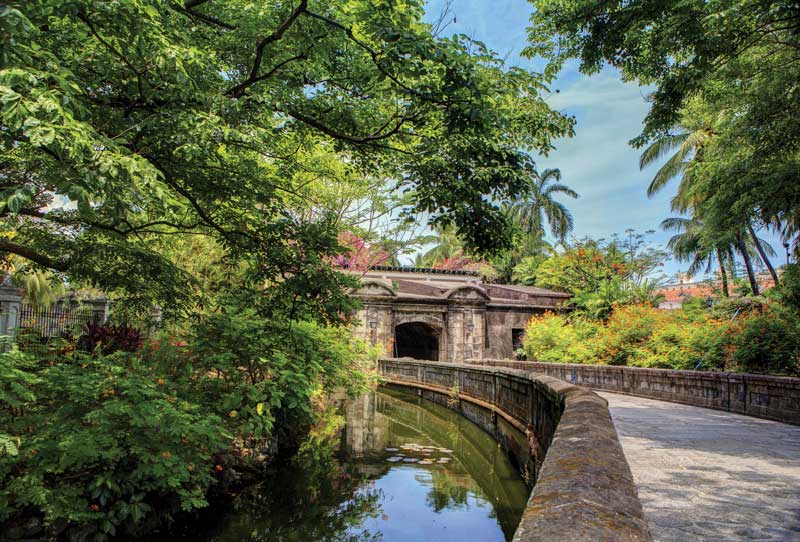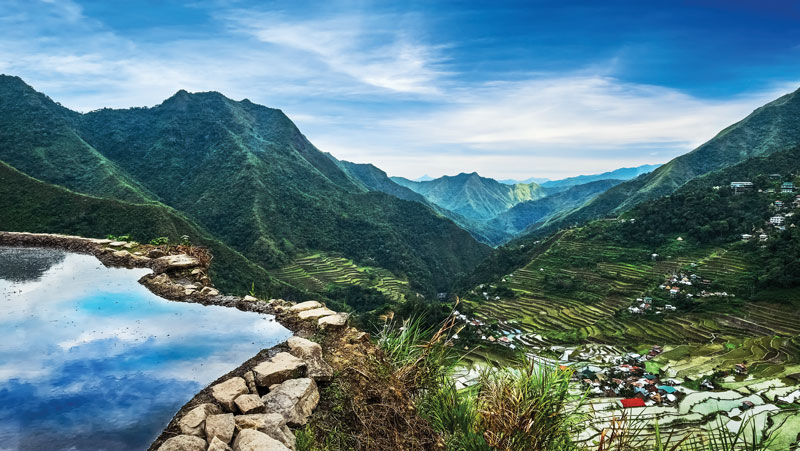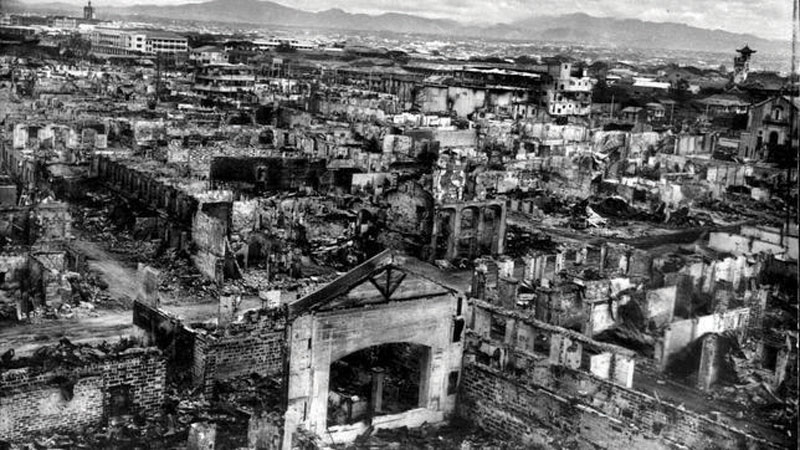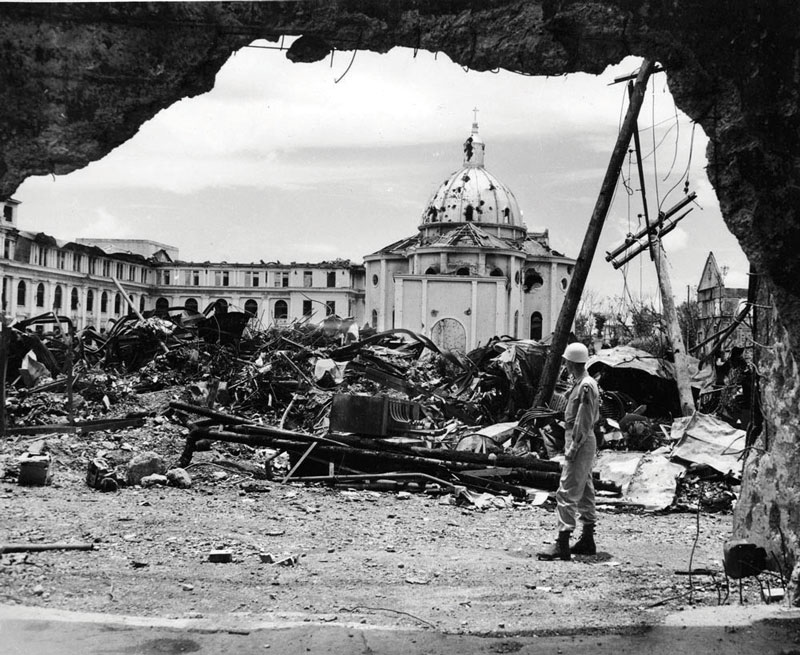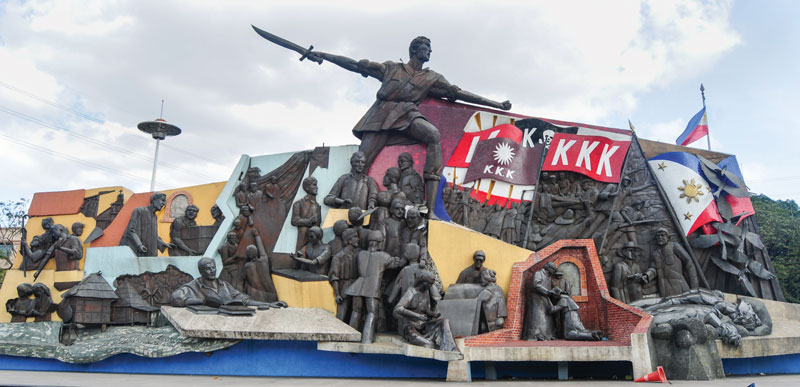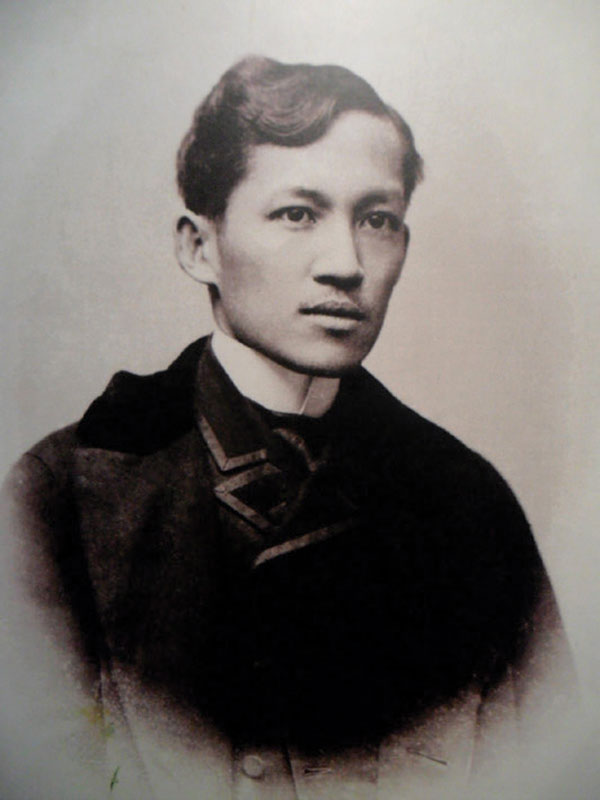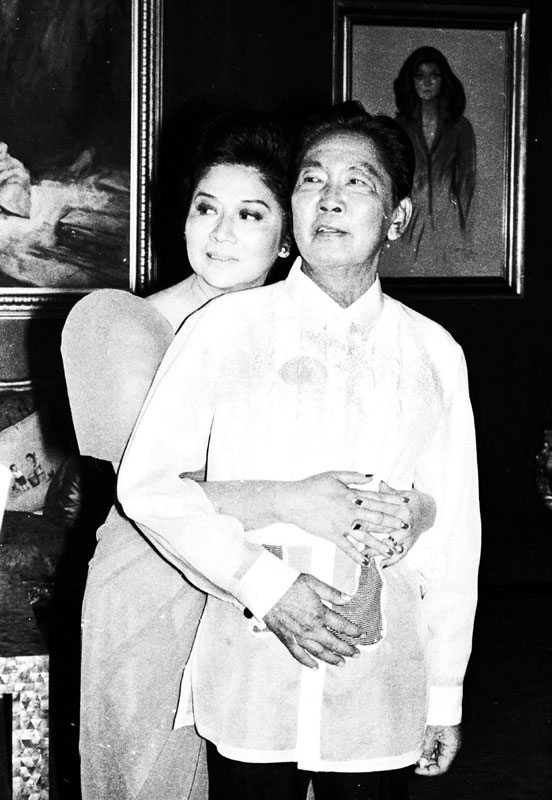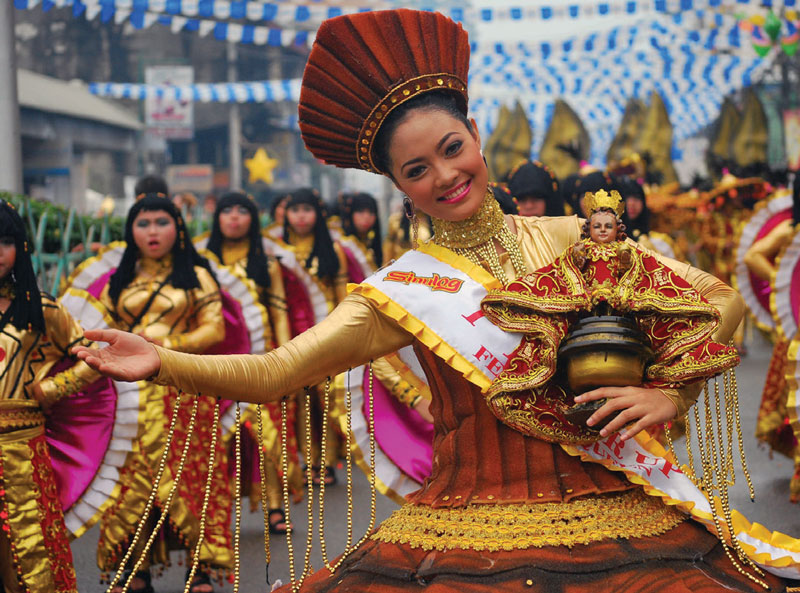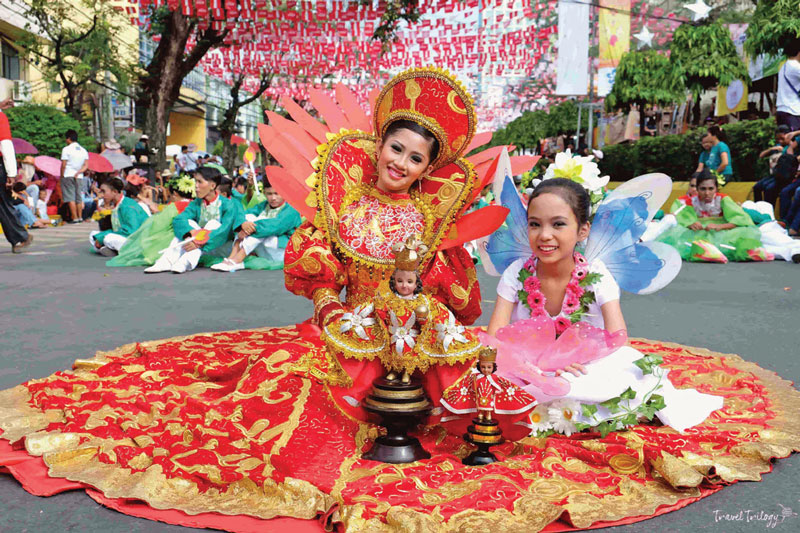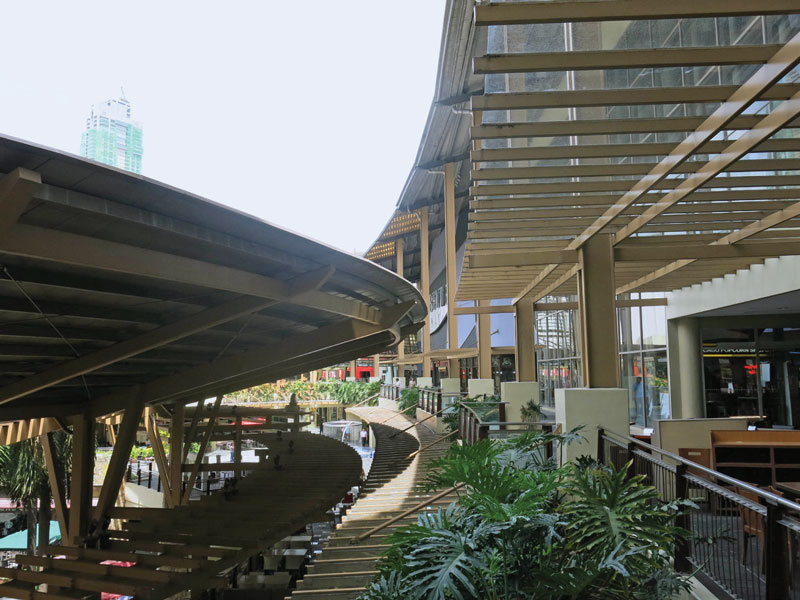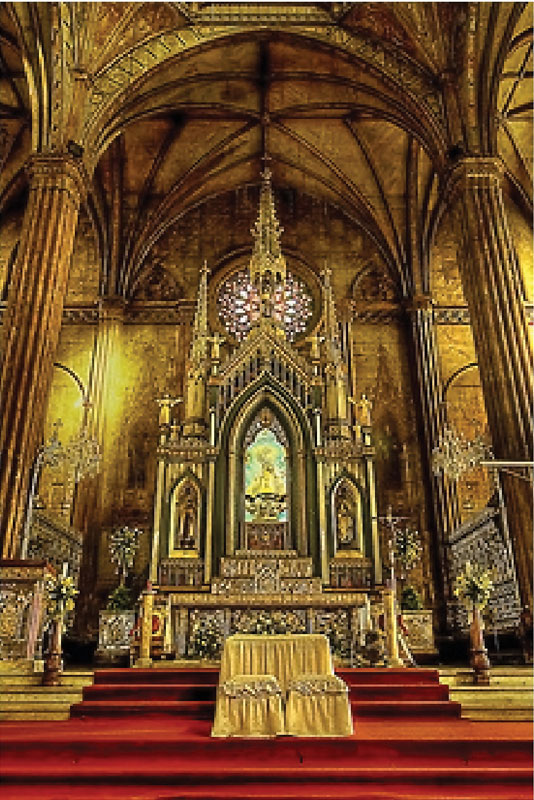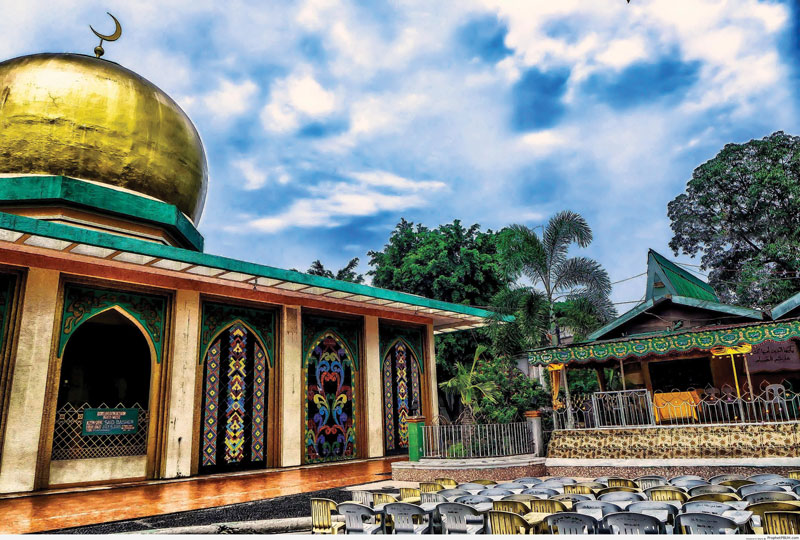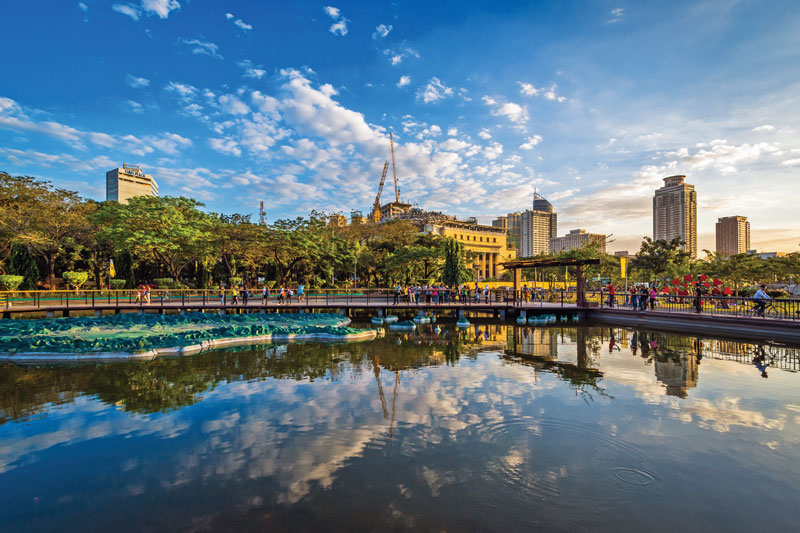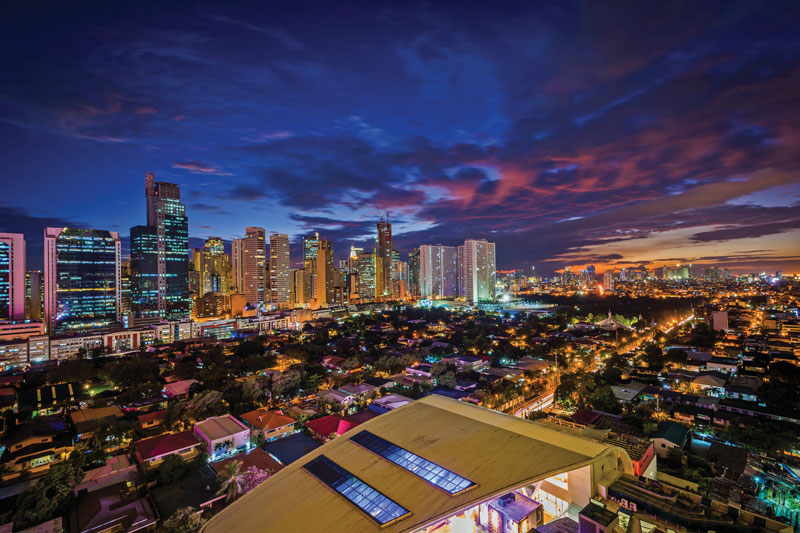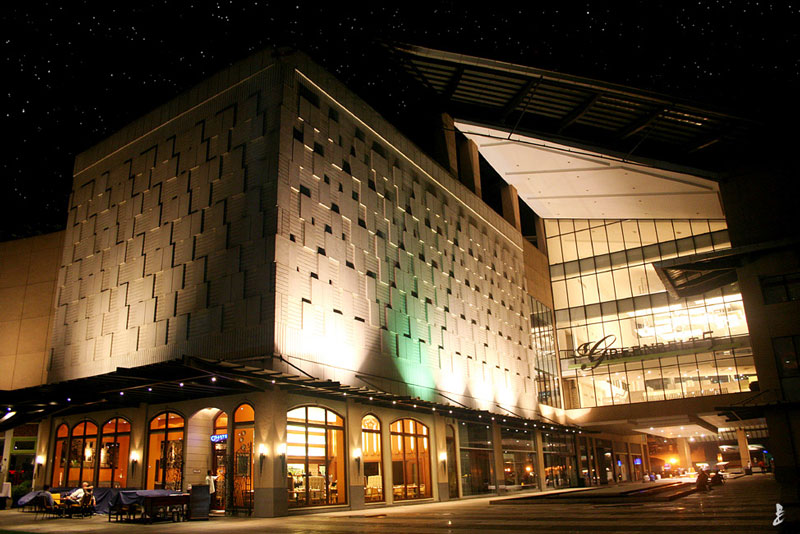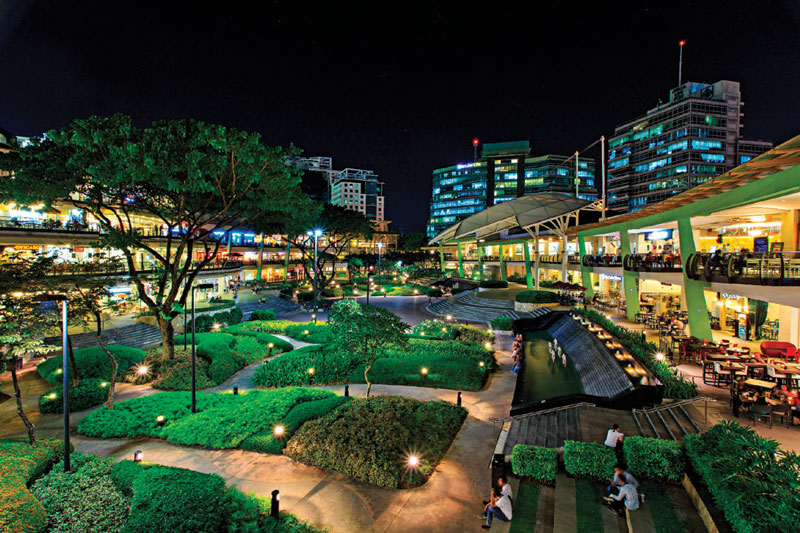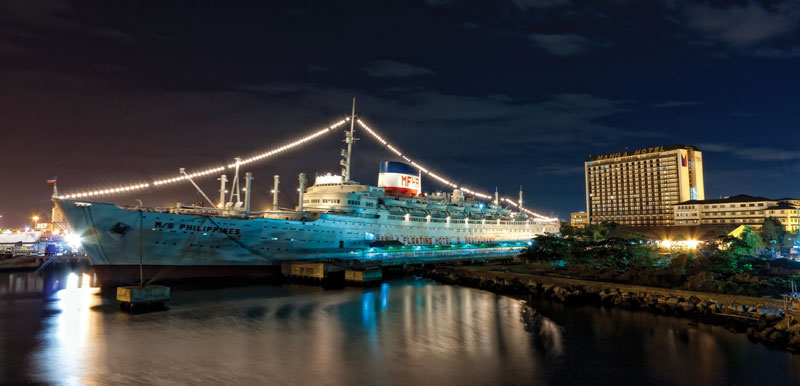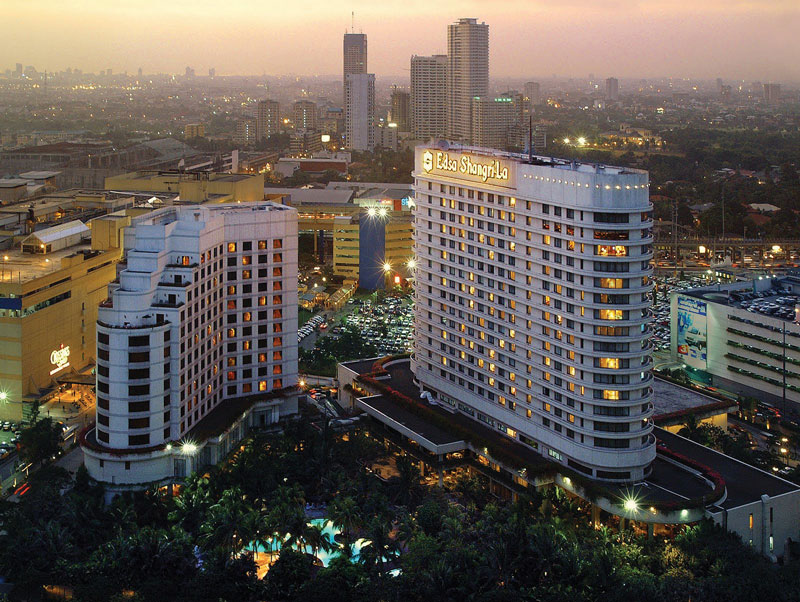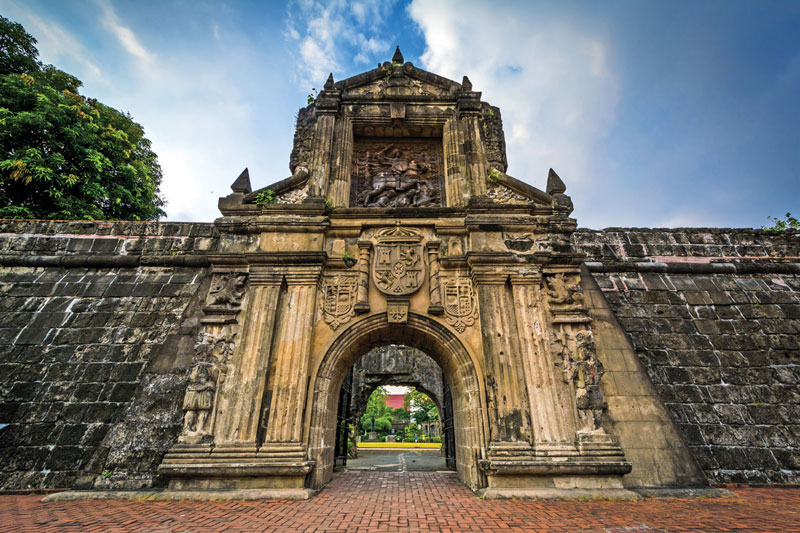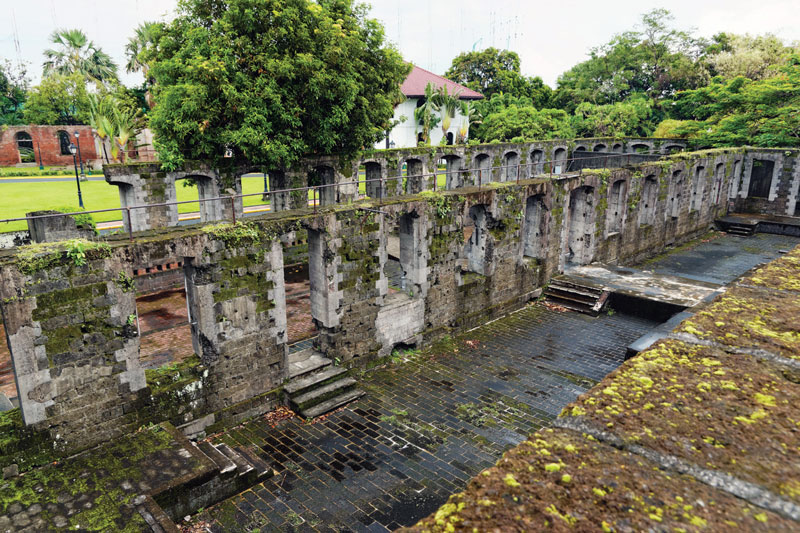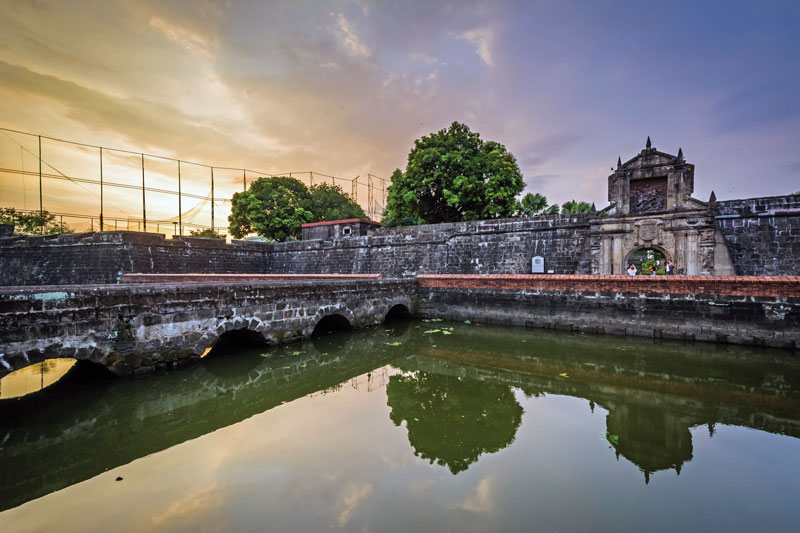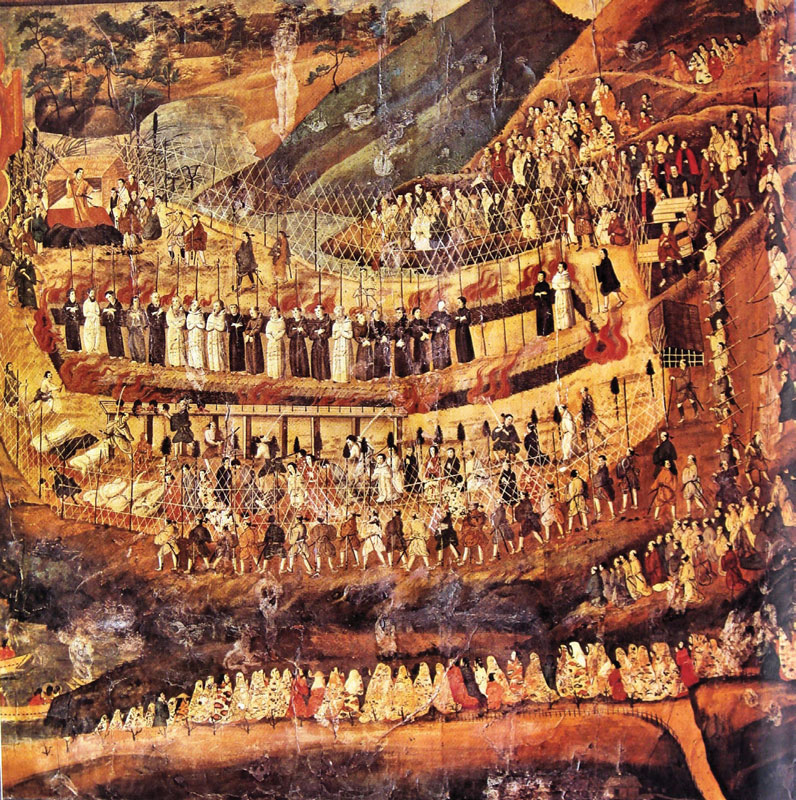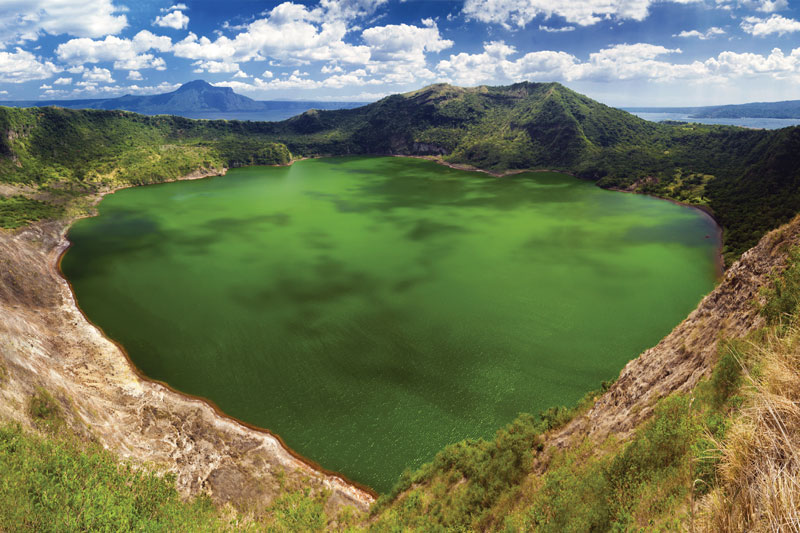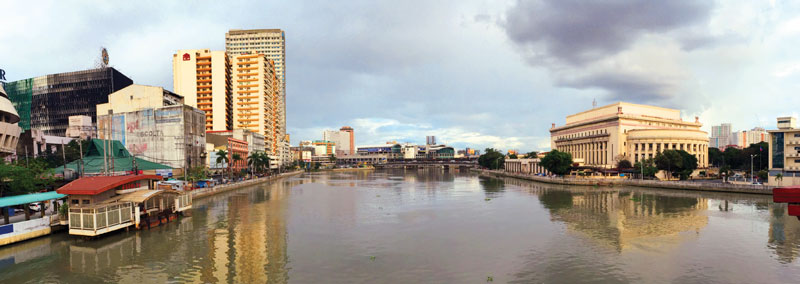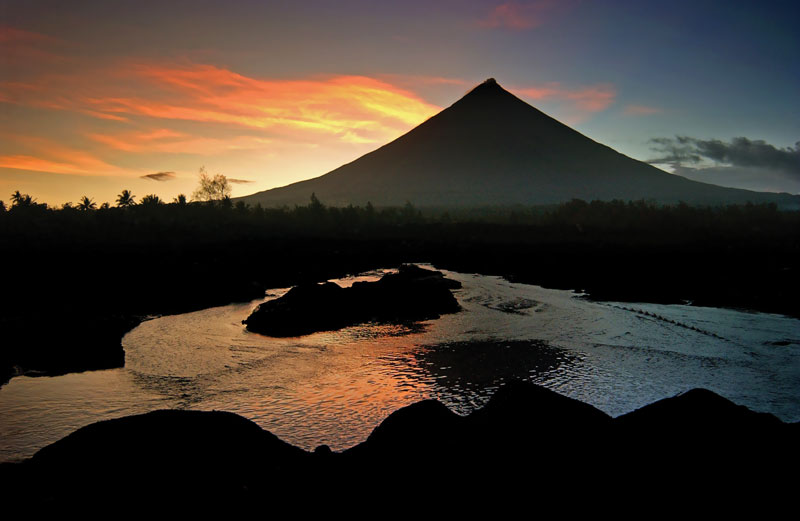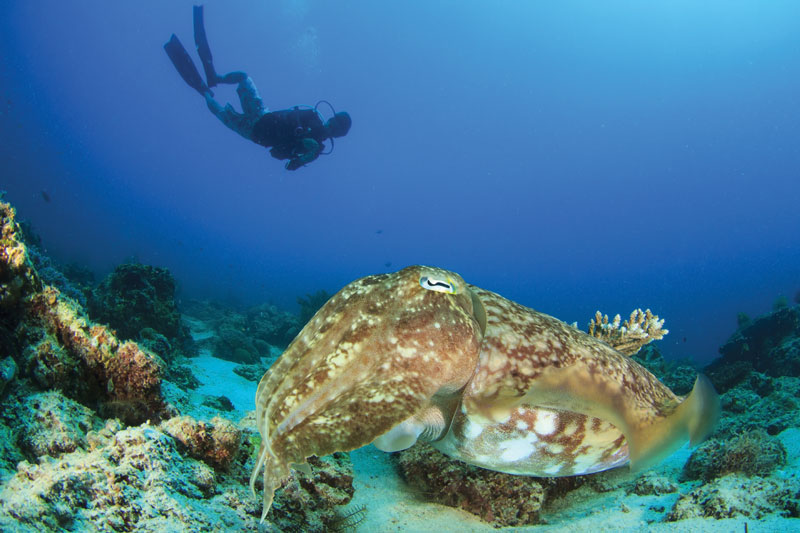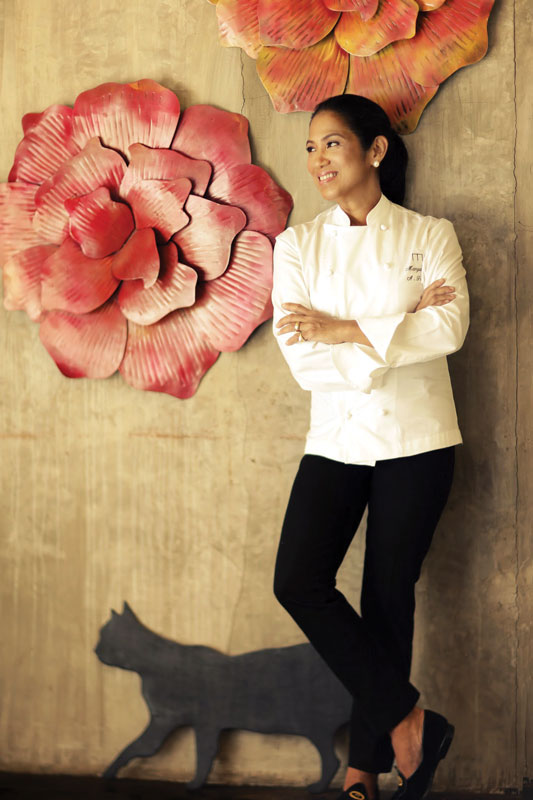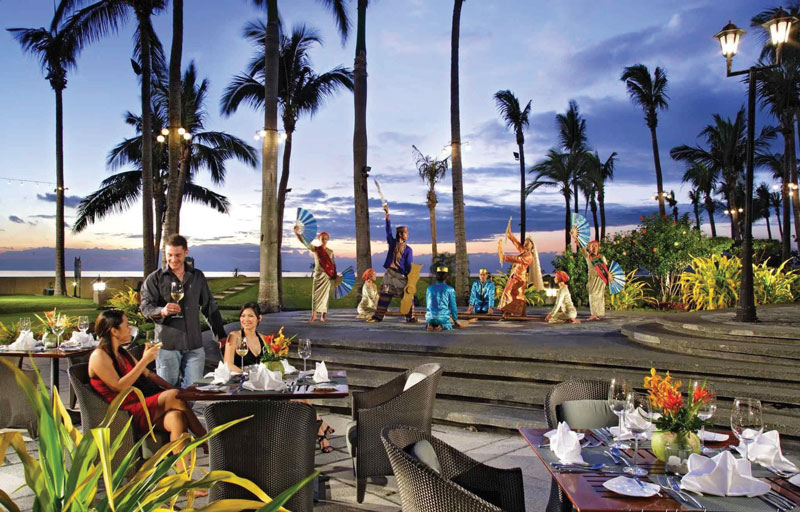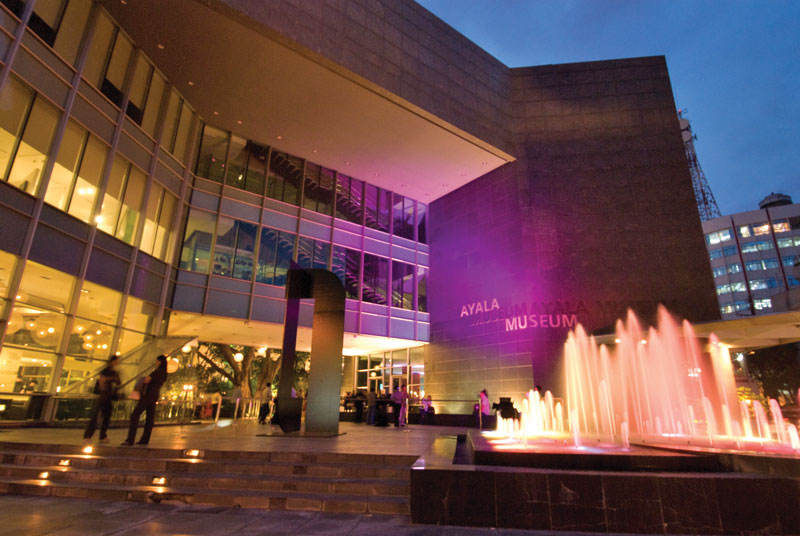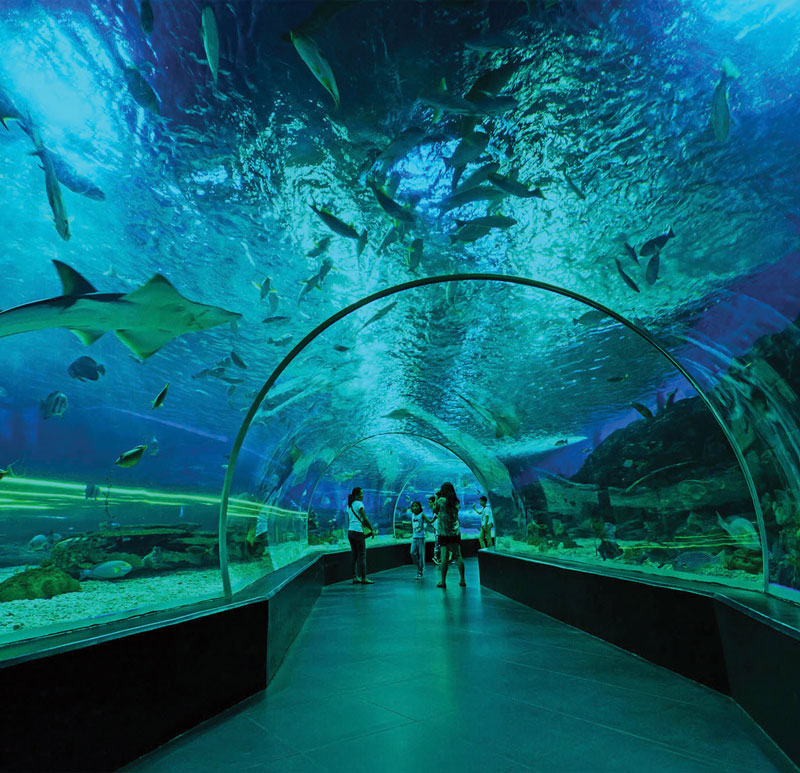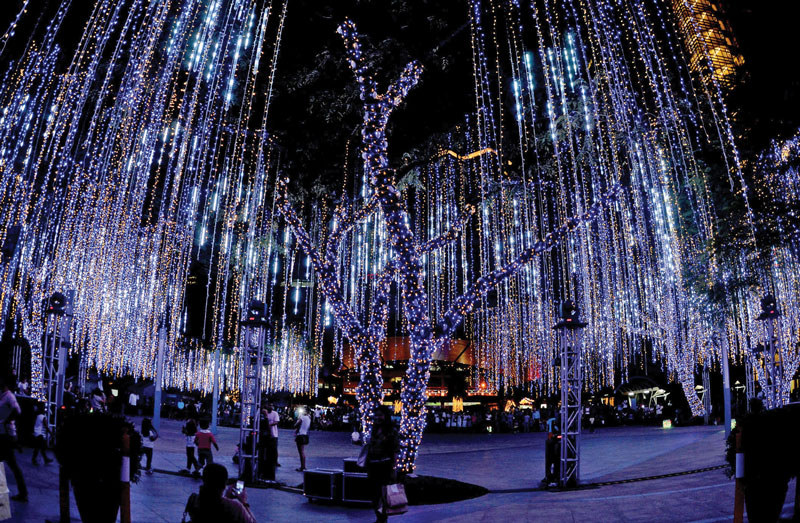The vessel-city that sails on land
Welcome to the most Latin American country in Asia! It is a nation that defies all preconceptions of the East, where Manila is the door to the world for the Philippines and the Philippines door to the world. When travelling through this city, we can visualize it as a ship that is still exploring its possibilities, ones that are vast and often insuperable. The Philippines is part of an archipelago composed of over 7,107 islands. It was names after King Philip II of Spain. Manila is the heart of an area that has resisted all types of natural catastrophes and geopolitical events that overtook the city on more than one occasion. And yet, the city always managed to compose itself, because, in spite of numerous challenges, it is home to sturdy populace.
A Mexican will immediately recognize those details that make him feel like he or she is in neighboring country—except for the almost non-existent passion for soccer, a sport that does not resonate with the people of Manila, unlike basketball-, including coming face to face with a Virgin of Guadalupe alongside a Buddha and other deities that reside in temples.
An intimate history exists between Mexico and the Philippine, due to the similarities in their cultures and past as Spanish colonies.
This relationship originates from those Spaniards who departed from the Mexican coasts to colonize the archipelago, only to later strengthen this bond by way of the legendary Manila Galleon, which connected the port of Acapulco with the Filipino capital, forming an economic, cultural, and social exchange and, in the process, becoming part of the backbone of what would eventual become a global economy.
One will notice a stark contrast when arriving at Manila. One the one hand, it is an earthly paradise dotted by inspiring scenery and exuberant flora and fauna. On the other, we find a deep welfare divide that reaches new depths when one travels along the most luxurious parts of the city. In spite of this, it is wise not to ignore the poorer parts of town, as they are homely and awash in bright colors, sounds, smells, and people willing to give a hand. It is a dignifying endeavor to observe how the locals read, sing, dream, and live under the rain showers —which fall daily— and to see how these showers embrace and hardened those who live in this tropical paradise. Today, Manila sails firmly on a set path, making its way through the world as an independent entity.
A rapid and violent transition
Manila is the product of a unique syncretism: Spain, Mexico, China, the United States, Japan, and Muslim culture as well, not to mention various indigenous communities. The city as such was founded in 1571 by Miguel Lopez de Legazpi, and the Intramuros fort soon took shape, around the year 1590, as Manila’s political, social, and defensive center.
Since then, the Philippines, which was governed by the Spanish crown for over two centuries, was annexed by the Unites States in 1898 through the Treaty of Paris. Before and after this, Manila has been a stage for all sorts of conflicts: pirate attacks, internal rebellions, natural disasters, and unbridled destruction during World War II. In fact, Manila besotted on all sides during the war, and the damaged it suffered can only be comparted to that of Warsaw.
The attack on Pearl Harbor in 1941 strained the United States into the war, as Japan made its way through the Pacific Ocean and Asia. The Philippines became then a key and decisive geopolitical point. After numerous Japanese attacks on Luzon during the winter of 1941, around 26 Ha-Go tanks occupied the city of Carmen on their way to Manila.
With Bataan and Manila in their sights, the city was cutoff and suffered from multiple aerial bombardments courtesy of the Japanese Air force. The air strikes wiped out the American-backed, but poorly trained, Filipino troops. By January, 1942, the Japanese had entered Manila, and in April of that same year, Radio Manila announced the occupation of Bataan, effectively making the Philippines part of the Japanese Empire. It would remain this way part of its dominion until 1945, when the United States launched an attack to recapture the archipelago. Nevertheless, Japan’s influence had permeated the Filipino conscience, and by 1946, the American Commonwealth was disbanded and the islands achieved sovereignty and independence. It had a long and difficult road ahead, as a country that was beginning to rebuild itself. Manila’s urbanization process rapidly advanced, though. Perhaps violently so. Not only was Intramuros rebuilt quickly, but the projects that were proposed to reconstruct the city after WWII laid the foundations for a modern metropolis. In the 90s, Manila became the city that is today, heavily funded and boasting admirable skyscrapers alongside its poorer neighborhoods.
Cradle for a democracy in Asia and the world
When travelling through Manila, one will notice the affection its people have for their national hero, Jose Rizal. Monuments of him are frequently found around the city, and form part of the colonial and urban landscape. Born in 1861, Rizal is the author of two novels: Noli me tangere, and The Filibustering (also known as The Reign of Greed).
In these works, Rizal denounces the abuse of the Spanish Crown, reason why his texts were suppressed in his own country. A man of letters, doctor, scholar, and activist, a defender of Filipino rights, who revolted at against the Catholic authorities, and the Spanish Crown, Rizal also established links with secrets societies that helped him to publish and distribute his works. One of these societies was the Filipino League, founded by Rizal himself in Hong Kong, in 1892.
His involvement in these societies made the authorities suspect of him of forming part of a Katipunan rebellion, which, although planned by members of the Filipino League after the arrest and deportation of Rizal, was not led by him. In spite of this, the charge was enough to have Rizal sent to Manila in 1896, and he was promptly executed by a firing squad. This event enrage the population, and they would never forget one of the authors of the Filipino independence. Nevertheless, Rizal was not the only example of a person fighting for democracy in the Manila and the rest of the archipelago.
Asia’s first female president, Corazon Aquino, was born in Manila in 1933, and is an icon of autonomy in every sense of the word. She is a woman who challenged and toppled a dictator, winning the faith of a people with a tremendous thirst for liberty. A consummate statesman, she studied humanities at New York in 1954, and later became engaged to the liberal activist and politician Benigno Aquino, with whom she fathered four daughters and one son.
In 1983, Ferdinando Marcos had shot Benigno Aquino as he arrived in Manila, this after spending three years in exile at the United States, and facing prospect of capital punishment. The event led Corazon to make fiery speech in favor of justice, and, soon after, to take power through the Power People Revolution, which Marcos was unable to contain.
During the elections that the then-dictator held in 1986, it was proven, by Aquino and their followers, that the finally tally was not only false, but that the numbers were dictated by Marcos. The revelations were devastating, as Marcos had not only lost the support of the people—made worse by his wife, Imelda Marcos, who acquired an enormous collection of jewels and shows as the country plunged into poverty—but of the military as well.
Ferdinando Marcos had no choice but to recognize the electoral victory of Aquino to prevent further mobilizations from the military and civilians against him. As such, in 1986, Corazon Aquino became the first female president of the Philippines, and in the whole of Asia. Her tenure, which lasted until 1992, was overshadowed by extremes in public opinion, minimum support from the army, and constant accusations of corruption.
It is interesting to listen hear the opinions of the Filipino people. Yet, what is beyond doubt, is that Corazon Aquino, who died in 2009 (a victim of cancer), is a symbol of democracy. Her only son, Benigno Aquino III, became president of the Philippines in 2009.
A metropolis with the soul of a ship
Manilas’ architecture is special. As part of a great archipelago, water surrounds it from all sides. Because of this, urban structures in Manila possess a nautical theme, as if the earth itself was floating on the water. The tropical weather affects not only the day to day activities but the culture in general as well. The typical Manila home is built with materials such as bamboo and wood, and are cooled by way of numerous and large windows. They are elevated from the ground, which allows wind to freely move around the structure. The upper floors is usually wider and longer than the lower floor to provide it with shade, and prevent flooding. The roofs are slanted to allow the rain water to prevent water from puddling.
Some homes, in fact, features “quiles” (it means “keels”); diagonal structures that support the roof and which resemble the structure that goes from stern to bow and holds together the structure of a ship (a ceiling in this case).
This is not a novel technique –it existed well before the great fire of 1583, and the earthquake of 1645. After these tragedies, hardened structures became more prevalent, but Manila’s architecture kept its nautical and tropical themes, which would later incorporate styles from other cultures and new materials. The cultural heritage that has the city that hosted the legendary Manila Galleon is undeniable.
The Manila spirt
Whether they own a home or not, the people in Manila mostly live outdoors. They eat, play, and sometimes even sleep and bathe under the sky. This gives travelers the impression that they are visiting a great family when they’re in Manila.
English is the unofficial language. A majority of Filipinos speak it while incorporating a number of Spanish and Tagalo words into the conversation. The locals are for the most part kind, educates, and always willing to lend a hands. Theirs is a culture of sharing.
It’s no surprise then that one of the most profitable businesses in Manila is the call center, as many Filipinos—especially those from Manila—are multilingual and specialize in costumer service. Manila is also home to many prominent translators and businessmen. If one is in need of assistance in the Philippines then one can expect an act of goodwill to follow. If the person cannot provide direct assistance, he will find someone to do so. This is the spirit of the city that has had to rise up from the ashes time and time again.
Amongst the chaos that is the daily dose of traffic, the people in Manila exude an air of Asian serenity and Latin joy, as well as marked sense of humor that reminds one of the Mexican people. Manila’s cultural fusion has created a unique national identity. Nothing illustrates this better than observing the famous “Jeepneys”, Manila’s public transport that consists of small buses decorated by the drivers themselves with a mix of collages that reflect the vibrant and diverse urban landscape.
In tune with Manila
Manila is an all in one: a life experience in every sense of the word, an unforgettable journey through exotic landscapes, a paradise with white-sand beaches, a city with areas that touch the heart and make it flutter, as well as a place that can now boast first-world facilities. It is a city where one can find art in all the details. Sometimes it is soothing, and other times rattles your senses, forcing travelers to adjust to the pace of the city.
Common activities include taking a stroll through the Manila Baywalk, or shopping at the Mall of Asia. From here, the city will open up to those willing to explore it. The Binodo neighborhood stands out for being the center of Chinese activity, which established itself in the 16th century and subsequently spread from generation to generation of artisans and merchants, men and women who slowly build and elite society inside Manila.
Quiapo features a golden mesquite—part of the Muslim community—and its surroundings are a true delight for travelers who enjoy exploring the city on food. The markets sell all kinds of unusual products, and the streets are dotted by psychic parlors were one can have their fortune told. In spite of these local enchantments, travelers must be cautious. It would be wise not to miss the San Sebastian Basilica, nicknamed the “Iron Church”—in Pasaje del Carmen-. It is a mesmerizing edifice painted in bluish hues built with pieces of iron shipped from Belgium at the end of the 19th century.
Rizal Park, at south of Intramuros, is where the local people gathered on festive days to celebrate they nationality in the same place where Jose Rizal was executed. Roxas Boulevard, on the other hand, is perfect to spend an evening admiring the views while having a drink in one of its many terraces. The Malete neighbor lies nearby, and it’s one of the business districts of the city, where travelers will find hotels, restaurants, and colonial buildings. This neighborhood is also home to several businesses, including a shocking sex industry.
Mataki stands out thanks to its modern buildings that provide a cosmopolitan air to Manila city. It is here where one finds most residential areas, local office buildings, shopping malls, and other leisure facilities.
The EDSA highway (Edifanio de los Santos Avenue) is the main artery of the city and features an elevated Metro railway. It is dotted with billboards, which can be sometimes threatening, as the frequent storms make them seem light and fragile. Others are extremely large and seem to have a life on their own.
By the way, the musical scene in Manila is one of the most well-rounded and interesting of the world. Most people learn music in churches, and this imbues the scene with some much-refreshing spirit. Musicians who learn how to play their instrument in churches later join local rock bands, and so we recommend that travelers spend some time in local bars to hear this peculiar blend of styles.
p>
Intramuros: the eternal pearl of the Orient
Before it was struck by tragedy in World War II, Intramuros was known around the world as the Pearl of the Orient. Today, despite its obvious disrepair, it still stands, and acts as an almost spiritual retreat for those who can appreciate its silent and ancient ruins, away from the excesses and stimulants of the Manila city.
The walls that still support themselves provide but a glimpse of just what a colossal vestige this edifice was. Luckily, the Fort of Santiago as well as the church and convent of Saint Augustine (a World Heritage Site) remains practically intact. The museum must not be missed. In December, the Great Mariana Procession took place, and it is the most important expression of catholic devotion in the city, as well as a celebration full of color and glee.
Intramuros has seen its fair share of renovation works, as it is not only the duty of the city of Manila to undertake this measures, but also that of Spain, who provides assistance as required. This relationship shows the bond that was created between the two nations by Inframuros.
Beyond Manila
Everything that surrounds the heart of the Philippines is worthy of being admired. Manila is a strategic point for travelers and, if we were to numbers the reasons why, perhaps the complete list would become interminable. Yet, we can name a few places near Manila that are worthy of being explored.
Corregidor Island is found in Manila Bay, and it stands out thanks to its military past, acting not only as a fortress but also a strategic point during World War II. For its part, the Angono municipality, located it a mere 30km from Manila, is recognized as the “Artistic Capital of the Philippines.” It is home to a large number of artists, and the place is known for its parades, outdoor festivals, and cultural events, as well as his admirable petroglyphs with more than 3,000 years old. Here we also find Lagoon Bay , with its splendid scenery.
Fifty kilometers from Manila is where we find the Luzon territory, home to the Taal Lake, a deep water enclosure formed by the ancient, and highly active, volcanic ridge. Its unique ecosystem persists under some peculiar conditions. Here, we find the city Tagaytay as well as some fishing villages that have become popular tourist destinations for the people of Mania.
Another curious fact about this island lake is that it is home to another island within its perimeter that is also displays high volcanic activity. This island, in turn, is also home to another small lake …that is home to another, smaller island! As if it was the reflection of a mirror into another mirror. Thermal waters have become another popular with the locals, mostly used for purifying baths. When visibility allows it, one can admire the great and sacred Banahaw volcano. Banahaw has been dormant for over two centuries, which allows travelers to gaze at its enormous horseshoe-shaped crater that forms a steep canyon where a river flows through. The volcano surroundings—considered a mystical focal point of powerful energy according to local people— are home to sublime views as well as waterfalls where travelers can mediate and cure their maladies.
In the depths of Luzon, we can also find the mesmerizing rice paddies of Banaue, which still amaze foreigners and locals alike. They were built by the natives of Ifugao over two millennia, and it’s been said that these stacked an unusual paddies dot the landscape well beyond the Great Wall of China.
Beyond Manila’s local attractions, the archipelago is a land rich for scientific inquiries. Travellers are encouraged to come face to face with the local flora and fauna, and to learn about sustainability and responsible tourism. Mindoro, Palawan, Mala Pascua, Puerto Princesa, Bohol, Busuanga, Tizon Pass, and the Babuyan Islands are places where a large number of native species reside.
Masarap!
Manila and the whole of the Philippines will do more than just surprise your palate. The Philippines is home to chef Margarita Fores, who has been recognized as Asia’s top chef. She and other extremely talented cooks work in top of the line restaurants that focus of Spanish and international cuisine. Most of these restaurants can be found in Manila.The local flavors fuse the best of the eastern and western cultures. The Spanish influences is marked, yet so is its Asian counterpart. Chefs wear garments called “Filipina”, which got its name from the Flipino cooks who used to wear a “borang tagalog”; a typical garment for the archipelago.
Some local dishes are more than just striking and, perhaps, a little odd, but bona fide challenges that only few dare to try. From small and exotic hors d’ oeuvres, to elaborate feasts that are eaten with ones hands, Manila dares travelers to experiment with a cuisine that possesses a unique personality of its own. Rice is a staple of most dishes, as is meat of all kinds. Vegetables are reserved for garnish and decorations, as they do not abound in the islands. Mexicans might be surprised delicacies from their country, such as chicharrón, horchata water, and longaniza (a type of Spanish sausage that spelled “longanissa” in the islands) to be part of the Filipino diet. A word of advice: they might taste a little different than they do in America, or even in Spain.
Another food item that has existed since time immemorial is the “balut”: a snack made of a duck embryo cooked in the shell. One might find the sight of this protein-rich delicacy, which is sold in the streets of Manila and Asia, to be intimidating. The locals insist that one has try it at least once, in spite of its unappetizing look. Other elements appreciated by Filipinos, those that are not universally esteemed by western palates, are grasshoppers -sold like fries in some markets-, as well as blood and offal from various animals to create a dish called “dinuguan”.
When in the Philippines, the chances of being invited over to a home to dine rise astronomically. If this be the case, dishes that are usually served include: “pancit”, a type of salted noodles; “lugaw”, rice soup; “mami”, noodle soup; and “sisig”, steak and eggs; amongst others. These dishes can be serve in a variety of ways, but all follow the same basic recipe. Hands are used to serve and to eat and, as guests, it is recommended to arrive with a present of some kind for the host, whether it can be wine, flowers, or a dessert, such as the enjoyable Philippine nougat. Once the plates are removed, the most cordial thing to do is to thank the guests with the true expression: “Masarap!” (“It was delicious!”).
The most common drink in Manila is beer, and “San Miguel” is the preferred brand, although more robust beers, such as “Red Horse”.
Other favorites include rum, sherry brandy (including the “Emperador” sherry, which, despite it being a recognizable “Spanish” brand, is owned by a Filipino) as well as “nilak” (coconut wine), a liquor that is locally produced; by the way, the Filipino government is looking at a Protected Designation of Origin label for this product, as was the case with Tequila in Mexico.
Sailing forward
Manila is the soul, heart, and mind of the Philippines, where the soul is the people of its communities, where its native-born people are especially admirable. Filipino success stories have broken through in the world of sports, business, show business, among other areas -including beauty contest for example-.
There is joy in the faces of the Filipino people, which comes from the realization that they have earned their freedom. They fiercely protect their dignity, and, despite their friendliness, will defend what they consider theirs, and will fight abroad if necessary. It is an admirable sight. Every Filipino expression at this moment is decisive for the nation destiny and the world fate, and Manila is the helm of this archipelago that has united in a single sky and identity: the proud and forever free Republic of the Philippines.
Text: Lizethe Dagdug ± Photo: © DREAMSTIME / MAPNUNDI / ABC / BUSINESS INSIDER /SPOKESMAN / BANDR / ABSOLUT FILIPINAS / MB ECAINF/ NICOLE SAMS / Bp / WPF/ RAFAEL CONANAN / Th Js / Gaisano / Conrad /Rojhkatah Baquiran / ChristianMartyrsOfNagasaki / Cloudinary / Pag / mb / maxresdefault / Travel Tipo / ADS/ DEORITZ / Brian Song / Cebu / Skf / Rgos / VLS / At / Manila Ocean Park / Nztravel / Rhoy Cobilla


